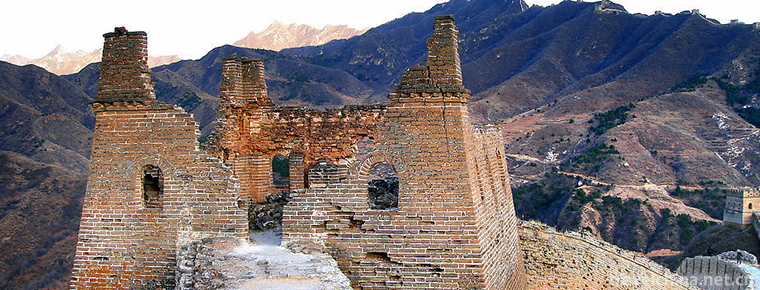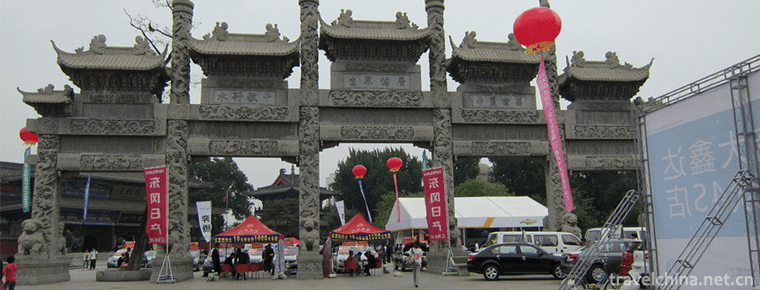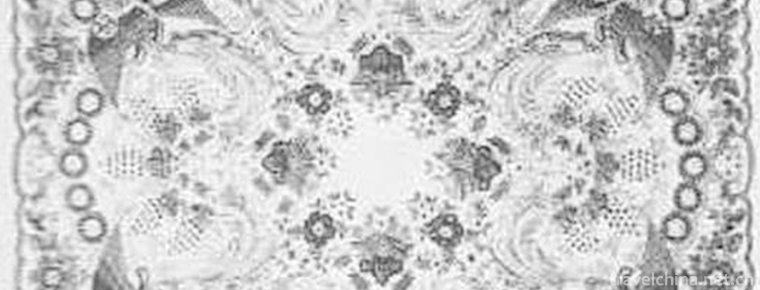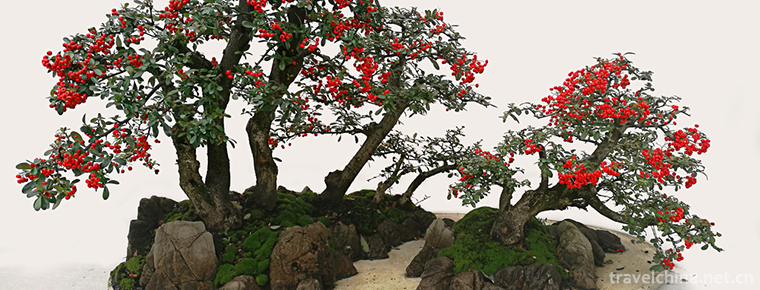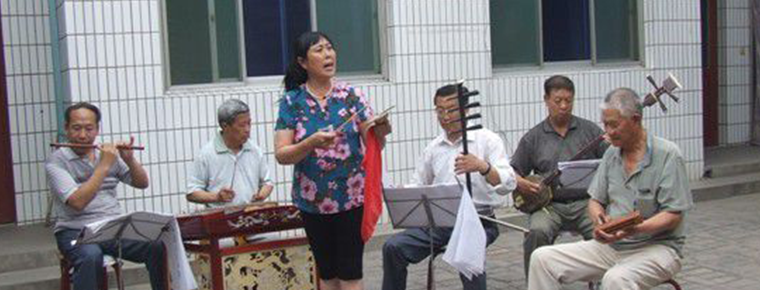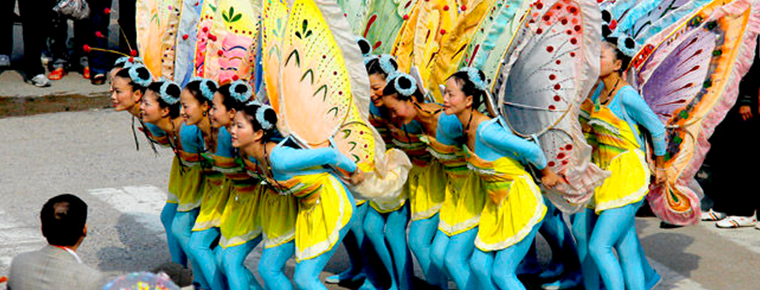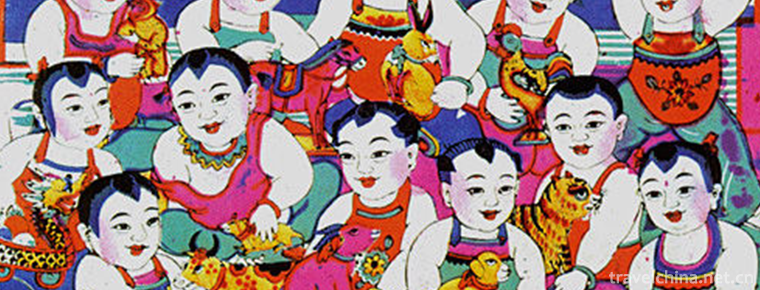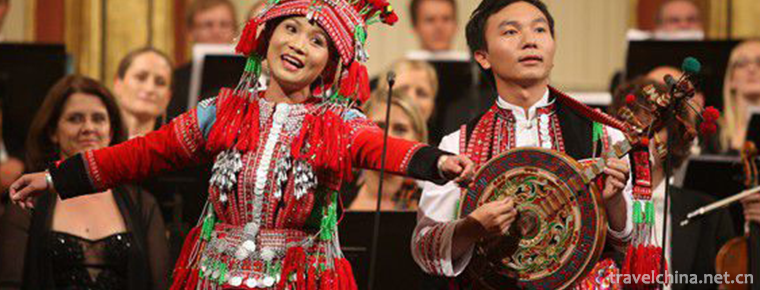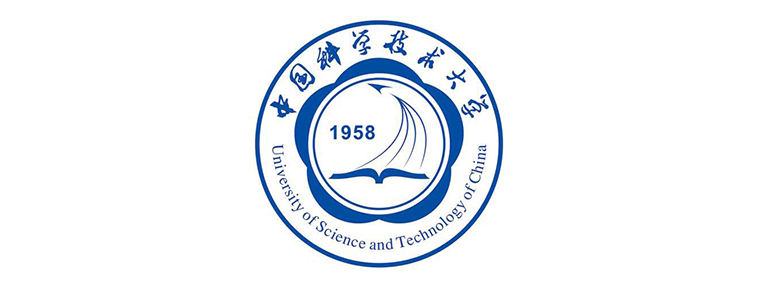Jingzhou Miao Geku
Jingzhou Miao Geku
The Miao people's song (tgong) has been declared as the first batch of national folk intangible cultural heritage and one of the two "national treasures" of Huaihua City. The Miao song pool has a long history, fully demonstrating the strong local minority characteristics of Jingzhou. Many experts and art enthusiasts who have appreciated the Miao song pool in Jingzhou call it "deep mountain treasure" and "the voice of nature".
historical origin
Jingzhou Miao and Dong Autonomous County is located in the southwestern border of Hunan Province, the border of Hunan and Guizhou provinces, and the middle reaches of the Canal River, a tributary of Yuanshui River. It is a mountainous county inhabited by many nationalities, of which the Miao population accounts for about 40% of the total population of the county, mainly distributed in the area of Sanshou Township.
The Miao people in Sanshou have a long history and a long history. They are closely related to the "Three Miaos" in Jiuli, Yao, Shun and Yu periods more than 5,000 years ago and the "Jingchu" in Zhou period. Because of the oppression and discrimination of the feudal rulers in past dynasties, Miao people, like other minority nationalities, were driven into the deep mountains and old forests. Miao people who have lived in the deep mountains for a long time have created and accumulated unique arts and cultures in hunting, logging and other production, living and resisting foreign attacks. "Gehu" is one of the most representative.
Sanqin Miao song is a multi-voice chorus form, which is evolved from the voice of nature. In ancient Miao villages, beautiful and fresh natural environment, simple and happy life, prompted the ancestors of the Miao nationality to have a strong interest and association in the rich and colorful "harmony" of nature, such as bird song, cicada singing, running water and Lin Tao. So they imitate the harmony of nature and compose the high and low overlapping melodies. Later, after long-term selection, processing and refining, they form a beautiful melody and harmony. From then on, the Miao people's Song-song has spread to the world in the form of music with national characteristics.
Jingzhou Sanshou area is known as "the land of folk songs". The Miao compatriots here love singing. They are all good choreographers of singing tunes. In Miaozhai, if you want to find a girl who can't sing, it's harder than climbing the sky. On the contrary, if you want to find two singers who can sing for three days and three nights in Miaoxiang, it's a simple matter. "Food for life, song for ease" is the spoken language of the Miao family. They regard singing as equally important to farming and eating, and singing has become the main way of communication of their thoughts, feelings, culture and art. In their long-term singing, they have developed the noble sentiment and moral character of gentleness, humility, mutual respect and love, hospitality, diligence and bravery, and inherited the rich and colorful Miao song culture in the process of seeking artistic beauty.
According to its music carrier, Miao people's songs can be divided into eight categories: tea song, wine song, mountain song, water-carrying song, rice song, style song, marriage song and tri-tone song. The lyrics of the song are seven words, four sentences or more. The language of the song is mainly the Miao language of Wu surname in Sanshou Township, supplemented by other surname languages. Most of them use rhetorical devices such as parallelism, exaggeration and personification, which are rich in associations, informative and philosophical. It is rich in content, wide-ranging subject matter, has a long-standing story song, a narrative song in praise of heroic deeds, a love song expressing the feelings of young men and women to each other, and so on. There are eleven tunes, which vary from place to place. The singing form mostly starts from the low voice part, then enters the middle and high schools, and many voices alternate with each other.
Jingzhou "spade" is located in the southwestern border of Hunan Province, along the border between Hunan and Guizhou provinces. Nearly 20,000 Miao compatriots live in this area.
The Miao nationality in Binli has a long history, which is closely related to the "Jiuli" more than 5,000 years ago, the "Three Miaos" in Yao, Shun and Yu periods and the "Jingchu" in Zhou period. Due to the discrimination and oppression of the feudal rulers in past dynasties, the ancestors of the Miao nationality were forced to move into the sparsely populated old mountains and forests, becoming the founder of the Miao nationality in the "spanli" area. Miao people in "spade" are industrious, simple, bright and bold. They are a people who "feed themselves with food and support their hearts with songs". For thousands of years, the beautiful and fresh natural environment and the simple life of sunrise and sunset have prompted the ancestors of the Miao nationality to imitate the harmony of nature such as bird song, cicada singing, running water and Lin Tao, as well as the rhythm emitted during production, labor and hunting. After long-term selection and refinement, they have created the unique flavor of the Miao song (teng). Therefore, Teng is not only an important carrier of life and interest, interpersonal and emotional exchanges, and cultural heritage of the Miao ethnic group in Tingli, but also an indispensable and important way of life in their daily life.
Representative works
Wine melody, style melody, marriage melody, etc.
Inheritance significance
With the development of transportation and communication in the "Langli" area, the long-term relative isolation between the local Miao people and the outside world has been broken, and the traditional cultural space on which the Miao people depend for their survival and development is shrinking rapidly; the important singers and singers are declining year by year, and the interest of the local Miao people in the song is becoming increasingly indifferent. The Miao people's song and their representative traditional culture are facing succession and no one is on the verge of succession. The great danger of being assimilated by foreign cultures and modern cultures.
The state attaches great importance to the protection of intangible cultural heritage. On May 20, 2006, Jingzhou Miao song Hoo was approved by the State Council and listed in the first batch of national intangible cultural heritage list.
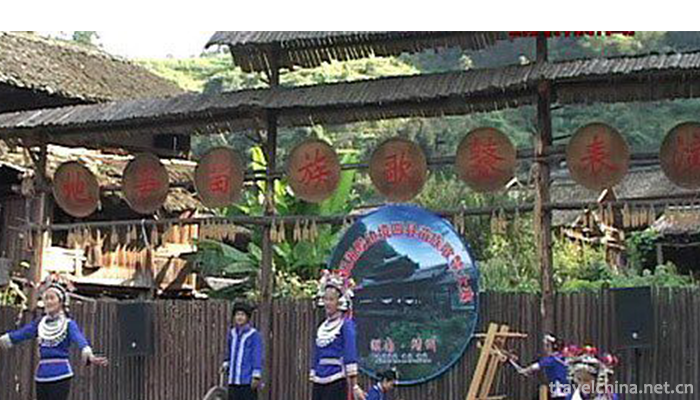
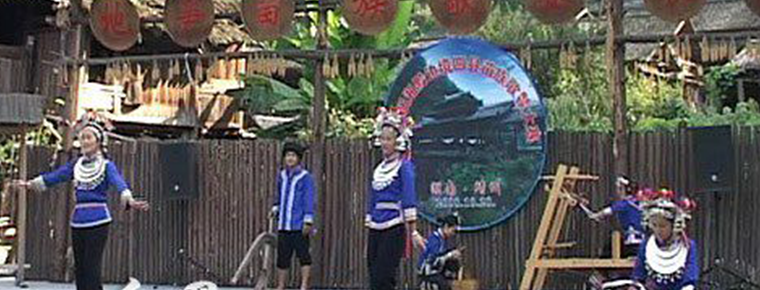
Jingzhou Miao Geku
-
the Gubeikou Great Wall
The ancient Beikou Great Wall is the most complete Great Wall system in the history of China's Great Wall. It consists of the Great Wall of the Northern Qi Dynasty and the Great Wall of the Ming Dynas
Views: 129 Time 2019-01-12 -
Guangyou Temple Scenic Area
Guangyou Temple is located in Liaoyang City, Liaoning Province, with Baita in the West and moat in the east. It covers an area of 60,000 square meters. The central axis of the north and south is archw
Views: 170 Time 2019-01-13 -
Drawing Shantou Drawing
Drawing is a kind of embroidery, also known as "lace". Legend has it that yarn drawing originated in Italy, France and Portugal, and was developed on the basis of folk embroidery in the Midd
Views: 170 Time 2019-04-18 -
The technical skill of penjing
Bonsai art refers to the Soviet bonsai art, which originated in the Tang Dynasty, flourished in the Ming Dynasty, matured in the Qing Dynasty, and developed in modern times. Since the 1980s, Suzhou Bo
Views: 254 Time 2019-06-09 -
Quwoqin Books
Quwo Qinshu is a kind of local traditional folk art form which was formed and mainly popular in Quwo County in the south of Shanxi Province and its adjacent areas of Shanxi, Shanxi and Henan provinces
Views: 333 Time 2019-06-11 -
Eighteen Butterflies
Eighteen butterflies is a local traditional dance form popular in the central part of Zhejiang Province (mainly in the area of Jinhua Yongkang). Twenty young women play the whole set of eighteen butte
Views: 124 Time 2019-06-15 -
Yangjiabu woodcut New Year paintings
Yangjiabu wood engraving New Year's picture is a traditional folk engraving which is spread in Weifang City, Shandong Province. Its production method is simple, exquisite craft, bright color, rich con
Views: 139 Time 2019-07-11 -
The seafood tune of the Yi nationality
The seafood tune of the Yi nationality Shiping Yi seafood tune, also known as "Shiping tune" and "Quzi", is commonly known as "inverted paddle". It is named after a herba
Views: 329 Time 2019-07-12 -
University Of Science And Technology Of China
University of Science & Technology China (University of Science and Technology of China) China University of science and technology Located Anhui Province Hefei City By Chinese Academy of Sciences
Views: 138 Time 2019-11-23 -
Nanchong first industry
In 2019, the sown area of grain crops in Nanchong is 558000 ha, which is 0.15% lower than that in 2018. The sown area of oil crops is 152000 ha, an increase of 1.9% over that in 2018. The vegetable planting area is 154000 hectares, an increase of 3.9% over that in 2018.
Views: 374 Time 2020-12-17 -
Nanchong science and technology
In 2019, Nanchong implemented 97 key science and technology plan projects, an increase of 7.8% over that in 2018, including 83 national and provincial science and technology plan projects. It won 11 provincial science and technology progress awards. In the whole year
Views: 158 Time 2020-12-17 -
guangan medical and health work
As of 2019, there are 3443 health institutions in Guang'an City. Among them, there are 79 hospitals, 174 health centers, 24 community health service centers (stations), 379 clinics, clinics and clinics, 2 blood collection and supply institutions, 7 matern
Views: 339 Time 2020-12-19
